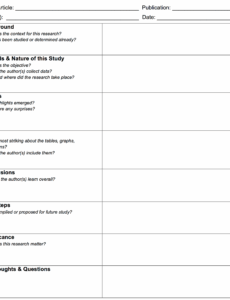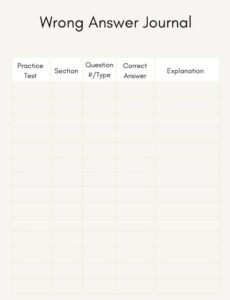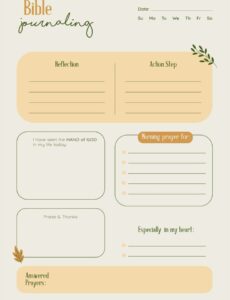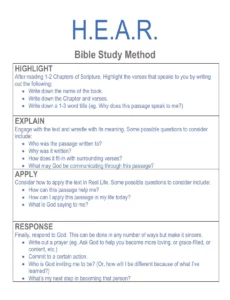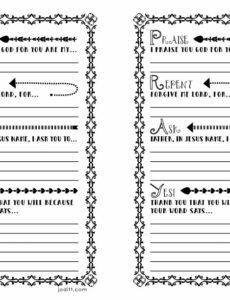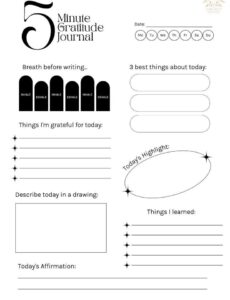Watching the world outside your window can be a magical experience, especially for little ones. Every day brings a new sky, a different breeze, and unique sights that spark curiosity. For young children, understanding these changes is an exciting journey into the natural world, and a fantastic way to introduce early science concepts without them even realizing they’re learning. It’s all about making observations and connecting with the environment around them.
That’s where a fantastic learning tool comes in: a weather journal. Imagine your child eagerly checking the clouds, feeling the wind, and then recording their findings in a special book designed just for them. It’s a hands-on adventure that nurtures their observational skills and expands their vocabulary. A well-designed weather journal template for kindergarten can transform daily weather checks into a cherished ritual of discovery and learning.
Why a Weather Journal is a Wonderful Tool for Kindergarteners
Introducing a weather journal to kindergarten-aged children is much more than just a fun activity; it’s a foundational step in their early education journey. At this age, children are sponges, soaking up information from their surroundings, and a weather journal provides a structured yet playful way for them to process these observations. It simplifies the often-complex topic of weather into manageable, child-friendly categories, allowing them to grasp fundamental concepts like sunny, cloudy, rainy, or windy days with ease.
This practice actively develops crucial observational skills. Children learn to pay attention to details they might otherwise overlook, such as the color of the sky, the movement of tree branches, or the presence of puddles. Each day becomes an opportunity for a mini-scientific expedition right outside their window or during their playtime outdoors. This consistent engagement sharpens their senses and encourages them to articulate what they see, hear, and feel.
Furthermore, a weather journal acts as a fantastic bridge to early literacy and numeracy. As they draw pictures of the sun or rain, they’re practicing their fine motor skills and creative expression. When they circle a weather icon or count the number of sunny days in a week, they’re engaging with numbers and patterns. They might even try to write simple words like “sun” or “rain” with guidance, building their foundational writing skills in a meaningful context.
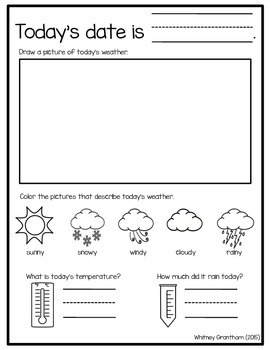
Ultimately, using a weather journal fosters a deeper connection with nature and sparks a lifelong scientific curiosity. It helps children understand that they are part of a larger ecosystem and that the weather directly impacts their daily lives and the world around them. This early exposure to systematic observation and recording lays the groundwork for more advanced scientific thinking in the future, all while being an incredibly enjoyable and engaging experience.
Key Benefits of Using a Weather Journal
- Enhances observational skills and attention to detail.
- Expands vocabulary related to weather phenomena.
- Develops early literacy and numeracy through drawing and simple counting.
- Fosters a connection to nature and environmental awareness.
- Promotes fine motor skills and creative expression.
- Encourages critical thinking and pattern recognition over time.
What Makes an Excellent Weather Journal Template for Kindergarten?
When you’re looking for the perfect weather journal template for kindergarten, simplicity and visual appeal should be at the top of your list. For young learners, clutter-free pages with large, clear graphics are essential. Overly complicated layouts or tiny spaces for drawing can quickly frustrate a child and detract from the learning experience. Think bold, cheerful colors and easily recognizable icons that represent different weather types, making it effortless for them to identify and mark the day’s weather.
An effective template will include the most basic and common weather elements that kindergarteners can readily observe. This means having clear representations for sunny, cloudy, rainy, snowy, and windy conditions. It’s also helpful if there’s a spot for the child to indicate the temperature in a simple way, perhaps by circling a picture of a warm coat, a T-shirt, or a scarf. Keeping the options straightforward ensures they can confidently make their daily entries without feeling overwhelmed by too many choices.
Crucially, a great weather journal template for kindergarten provides ample space for drawing. Children at this age often communicate best through art, and drawing the day’s weather helps them to process and internalize their observations creatively. This drawing space encourages their imagination and allows them to personalize their journal. Some templates also include a small area for an adult or an older child to write down what the kindergartener dictated, linking their drawing to early written words.
Beyond the daily weather, some templates thoughtfully include sections for extra observations, like drawing what they wore that day, or what activity they did because of the weather. These small additions make the journal more engaging and provide context for their weather findings. Look for templates that are durable, especially if they are going to be used repeatedly, or easily printable so you can have a fresh page each week or month.
- Simple and visually engaging icons for easy identification.
- Ample drawing space for creative expression.
- Clear, large print for dates and simple words.
- Options for recording basic temperature and wind.
- Durable format or easy-to-print pages for consistent use.
- Bonus sections for what to wear or weather-related activities.
Incorporating a weather journal into a child’s routine offers a remarkable opportunity to blend playful exploration with meaningful learning. It’s a gentle introduction to scientific methods, fostering an understanding of cause and effect, patterns, and the interconnectedness of our world. This simple daily ritual can spark a lifelong curiosity about meteorology and the environment, laying a rich foundation for future academic success and a deeper appreciation for nature.
By empowering children to become active observers of their surroundings, we’re not just teaching them about sunshine and rain; we’re cultivating critical thinking, attention to detail, and a sense of wonder. A well-chosen weather journal template for kindergarten is more than just a collection of pages; it’s an invitation to embark on an exciting journey of discovery, transforming everyday weather into a captivating lesson for young, eager minds.
